Search Images
Browse Content (p. 118)
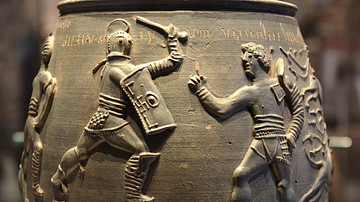
Image
The Colchester Vase
The "Colchester Vase" is a cremation vessel decorated with a continuous frieze depicting scenes relating to arena spectacles, including the combat between two gladiators named Memnon and Valentinus. Memnon is a well-armoured secutor gladiator...
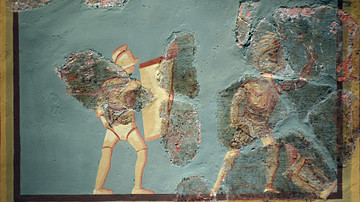
Image
Fresco with Gladiators
This reconstructed piece of wall includes fragments of the original Roman fresco from Camulodunum (Roman Colchester) depicting gladiators. The figure on the right is a defeated murmillo gladiator. He has dropped his shield and has raised...
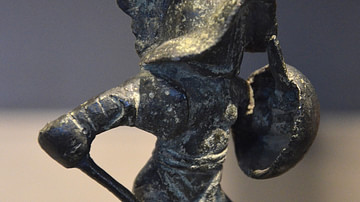
Image
Bronze Statuette of a Hoplomachus
Bronze statuette of a hoplomachus, a type of gladiator in ancient Rome, armed to resemble a Greek hoplite (soldier with heavy armour and helmet, a round shield, a spear, and a sword). The hoplomachus wore a bronze helmet, a manica (armguard...
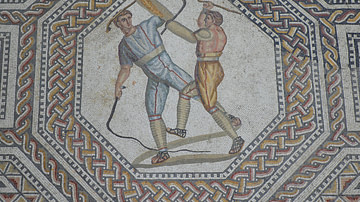
Image
Mosaic Panel with two Gladiators
Roman mosaic panel depicting a contest between two combatants attacking one another with cudgels (short, thick sticks used as weapons) and a whip. The introduction to the gladiatorial contests consisted of a prolusio (prelude). The various...
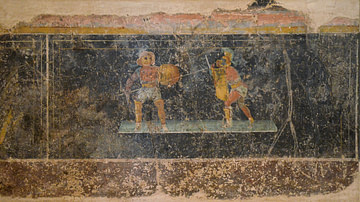
Image
Fresco with a Hoplomachus and a Murmillo
A fresco panel depicting a hoplomachus fighting against a murmillo, from the Roman Villa of Mechern, dated to the 3rd century CE.
Museum of Pre- and Early History, Saarbrücken, Germany.
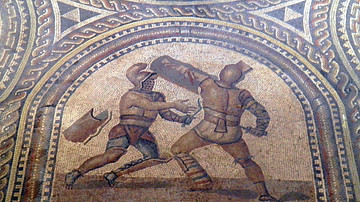
Image
Mosaic with a Thracian and a Murmillo
Roman mosaic panel depicting a Thraex, or Thracian (left) fighting a murmillo (right), dated to the 3rd century CE.
Römerhalle, Bad Kreuznach, Germany.
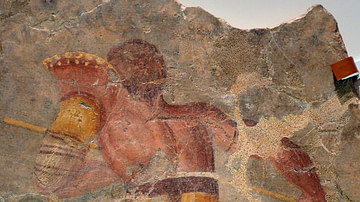
Image
Fresco with a Gladiator
Fresco fragment with a gladiatorial scene (munus gladiatorium), from the Forum of Vesunna (Périgueux), 2nd century CE. Photo taken in 2015 at the Empire of Colour. From Pompeii to Southern Gaul exhibition at the Musée Saint-Raymond in Toulouse...
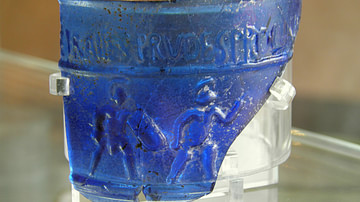
Image
Glass Gladiator Cup
Fragment of a blue glass cup with a scene depicting a pair of gladiators fighting. The gladiators are identified by name in the Latin inscription above them: etraites (a murmillo) and Prudes (a Thracian), with part of the name of Proculus...
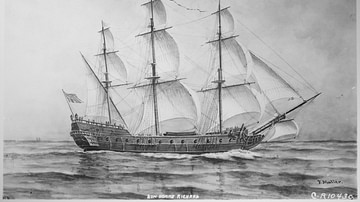
Image
USS Bonhomme Richard
USS Bonhomme Richard, 1779. Copy of an artwork by F. Muller.
U.S. National Archives and Records Administration, Naval History Photographs.
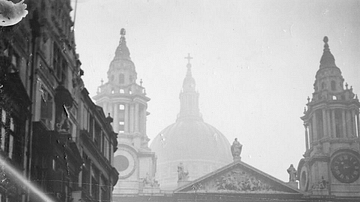
Image
Firefighters, London Blitz
A photograph of firemen fighting a blaze during the London Blitz (1940-1). St. Paul's Cathedral can be seen in the background. (Imperial War Museums)